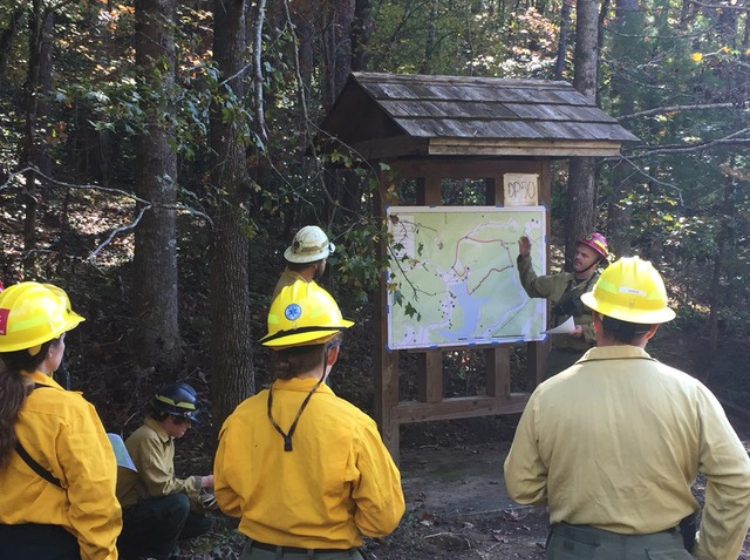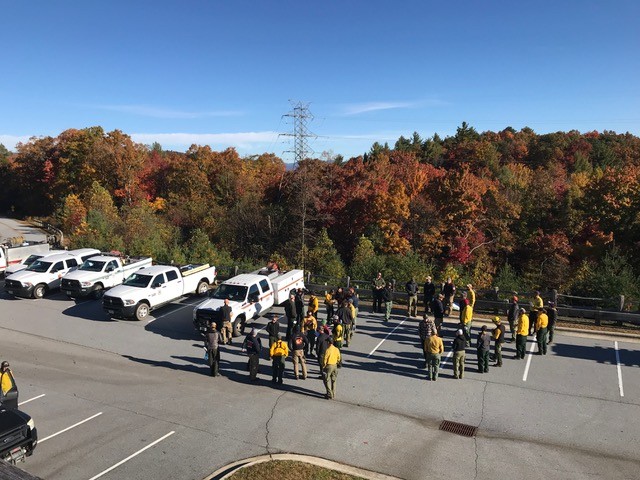Updates & Blog
Cultivating a Cooperative Approach to Wildfire Suppression

When it comes to suppressing wildfires in the Southeast, interagency relationships formed during regular prescribed burning operations have helped optimize wildfire response efforts. This is especially true in South Carolina, where these strong relationships helped the South Carolina Forestry Commission (SCFC) stay ahead of disaster and kept the 10,600-acre Pinnacle Mountain Fire of 2016 manageable. With such a busy fire season that year, those relationships were vital in ensuring the Pinnacle Fire was managed and suppressed without damaging infrastructure or communities, including the 928 homes and businesses directly threatened by the wildfire.
Over the years, several South Carolina agencies have collaborated to conduct prescribed fires, also known as controlled burns, [MG1] as part of routine forest maintenance to reduce flammable overgrowth. SCFC, working alongside South Carolina State Parks, the Fire Learning Network, the USDA Forest Service, The Nature Conservancy, the North Carolina Forest Service, Greenville Water, among others, have continued to proactively work together to maintain the forests in western South Carolina along the Blue Ridge Escarpment.
This history of collaboration allowed solid relationships to form across the various agencies, so that when disaster did strike, there was a wealth of shared resources and information available to collectively work together on the Pinnacle Mountain Fire. As Helen Mohr, a Researcher for the USFS Southern Research Station, explains, “All the time we had spent together on prescribed fire planning was really worth its weight in gold when it came to wildfire suppression, because we knew the neighbors. We knew we could use a gravel road on Department of Natural Resources land, we didn’t have to build relationships on the fly in an emergency response situation.”
Federal and state lands in the South are heavily fragmented with many neighboring jurisdictions; it is vital to work together to ensure a positive outcome. Community support and collaboration are necessary to protect people, homes, natural resources and infrastructure, while managing complex wildfire behavior. By fostering relationships across different agencies, those involved in the Pinnacle Mountain Fire stayed ahead of the curve. This wildfire provided a lot of lessons learned and put everyone in a better position to suppress future wildfires. “Every agency has their own perspective; every agency has their own goals. But partnerships are the way we can move forward and thrive with fire, there is no reason we can’t thrive with fire as a part of our landscape every day,” said Helen Mohr.

Agreements under the Wyden Authority, where private landowners collaborate with USDA Forest Service land when their property is adjacent, allow multiple agencies to work together to gain experience on prescribed burns. These Wyden Agreements helped start the process of forming solid relationships for those involved in the Pinnacle Mountain Fire and continue to strengthen those relationships to be prepared for future wildfires. That interagency collaboration and support also helped other local entities strengthen their confidence in the benefits of prescribed fire, with Greenville Water allowing for maintenance and firebreaks within their untouched 30,000 acres to help mitigate excess fuels that could otherwise worsen a future wildfire scenario.
Now, seven years after the fire, the relationships formed during the 2016 fire season are continually strengthened through ongoing training exercises and collaborative efforts. One such effort is the Southern Blue Ridge Prescribed Fire Training Exchange (SBR TREX) which formed in 2018 from the cohesive approach taken during the Pinnacle Mountain Fire. The SBR TREX was the first type of prescribed fire training exchange offered specifically in the Appalachians and has continued annually since its inception in 2018, with the next event scheduled for November 2023.
Darryl Jones, SCFC Forest Protection Chief explains the sense of community as, “North, east and west are directions – the South is a place. The community support was really high and they saw all of these different agencies working well together and coming together. Things that could have gone really wrong were made a lot easier because of the relationships we had formed. “We are better positioned for the next fire because of all the relationships. We know the players, we know each other, we know the landscape, so we have a starting place for the next big fire.”